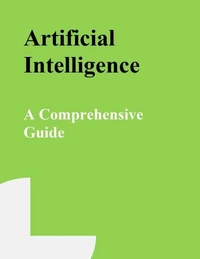Muscles are the engines of the human body, responsible not only for movement and posture but also for a myriad of essential physiological processes. From the powerful contraction of the heart to the subtle expressions on a face, muscles are behind almost every action we perform. Muscles: An In-Depth Overview of the Body's Engine is a comprehensive exploration of the muscular system, designed for students, healthcare professionals, fitness enthusiasts, and anyone intrigued by the complexity and beauty of human anatomy.
This book provides a detailed yet accessible overview of the muscular system, beginning with the basic structure and function of muscle tissue. It delves into the three primary muscle types-skeletal, cardiac, and smooth-explaining their unique roles, anatomical features, and cellular mechanisms. Readers will gain an understanding of how muscles contract at the molecular level, exploring the sliding filament theory, the role of calcium ions, and the function of ATP in muscular activity.
Skeletal muscles, the most well-known and voluntarily controlled, are examined in depth, including their anatomy, innervation, blood supply, and classification based on fiber types. The book covers how these muscles contribute to movement through their attachment to bones via tendons and how they are controlled by the nervous system. Readers will also learn about the organization of muscles into functional groups-such as agonists, antagonists, synergists, and fixators-and how these relationships facilitate coordinated motion.
Cardiac muscle, found only in the heart, is explored from a physiological and pathological perspective, including its unique intercalated discs, rhythmic contraction capabilities, and its vital role in maintaining circulation. Smooth muscle, present in internal organs like the intestines and blood vessels, is explained in terms of its autonomous control, slower contraction rate, and importance in maintaining essential involuntary functions.
In addition to anatomy and physiology, the book delves into topics such as muscle development, adaptation, regeneration, and aging. Readers will gain insight into how muscles grow (hypertrophy), shrink (atrophy), and adapt to different types of physical activity, as well as how they heal from injury. The role of muscle in metabolism, thermoregulation, and endocrine function is also discussed, emphasizing the muscular system's broader relevance to overall health.
The book also introduces readers to various muscular disorders and diseases, ranging from genetic conditions like muscular dystrophy to acquired conditions like myositis and sarcopenia. These sections are written to provide a clinical context and highlight the importance of early diagnosis, rehabilitation, and ongoing research. Rich with illustrations, diagrams, and easy-to-understand explanations, Muscles: An In-Depth Overview of the Body's Engine bridges the gap between complex medical science and practical understanding.
Whether you're preparing for exams, seeking to improve your training regimen, or simply curious about how your body moves and functions, this book offers a thorough, engaging, and enlightening journey through one of the most essential systems in the human body.
Muscles are the engines of the human body, responsible not only for movement and posture but also for a myriad of essential physiological processes. From the powerful contraction of the heart to the subtle expressions on a face, muscles are behind almost every action we perform. Muscles: An In-Depth Overview of the Body's Engine is a comprehensive exploration of the muscular system, designed for students, healthcare professionals, fitness enthusiasts, and anyone intrigued by the complexity and beauty of human anatomy.
This book provides a detailed yet accessible overview of the muscular system, beginning with the basic structure and function of muscle tissue. It delves into the three primary muscle types-skeletal, cardiac, and smooth-explaining their unique roles, anatomical features, and cellular mechanisms. Readers will gain an understanding of how muscles contract at the molecular level, exploring the sliding filament theory, the role of calcium ions, and the function of ATP in muscular activity.
Skeletal muscles, the most well-known and voluntarily controlled, are examined in depth, including their anatomy, innervation, blood supply, and classification based on fiber types. The book covers how these muscles contribute to movement through their attachment to bones via tendons and how they are controlled by the nervous system. Readers will also learn about the organization of muscles into functional groups-such as agonists, antagonists, synergists, and fixators-and how these relationships facilitate coordinated motion.
Cardiac muscle, found only in the heart, is explored from a physiological and pathological perspective, including its unique intercalated discs, rhythmic contraction capabilities, and its vital role in maintaining circulation. Smooth muscle, present in internal organs like the intestines and blood vessels, is explained in terms of its autonomous control, slower contraction rate, and importance in maintaining essential involuntary functions.
In addition to anatomy and physiology, the book delves into topics such as muscle development, adaptation, regeneration, and aging. Readers will gain insight into how muscles grow (hypertrophy), shrink (atrophy), and adapt to different types of physical activity, as well as how they heal from injury. The role of muscle in metabolism, thermoregulation, and endocrine function is also discussed, emphasizing the muscular system's broader relevance to overall health.
The book also introduces readers to various muscular disorders and diseases, ranging from genetic conditions like muscular dystrophy to acquired conditions like myositis and sarcopenia. These sections are written to provide a clinical context and highlight the importance of early diagnosis, rehabilitation, and ongoing research. Rich with illustrations, diagrams, and easy-to-understand explanations, Muscles: An In-Depth Overview of the Body's Engine bridges the gap between complex medical science and practical understanding.
Whether you're preparing for exams, seeking to improve your training regimen, or simply curious about how your body moves and functions, this book offers a thorough, engaging, and enlightening journey through one of the most essential systems in the human body.

 , qui est-ce ?
, qui est-ce ?